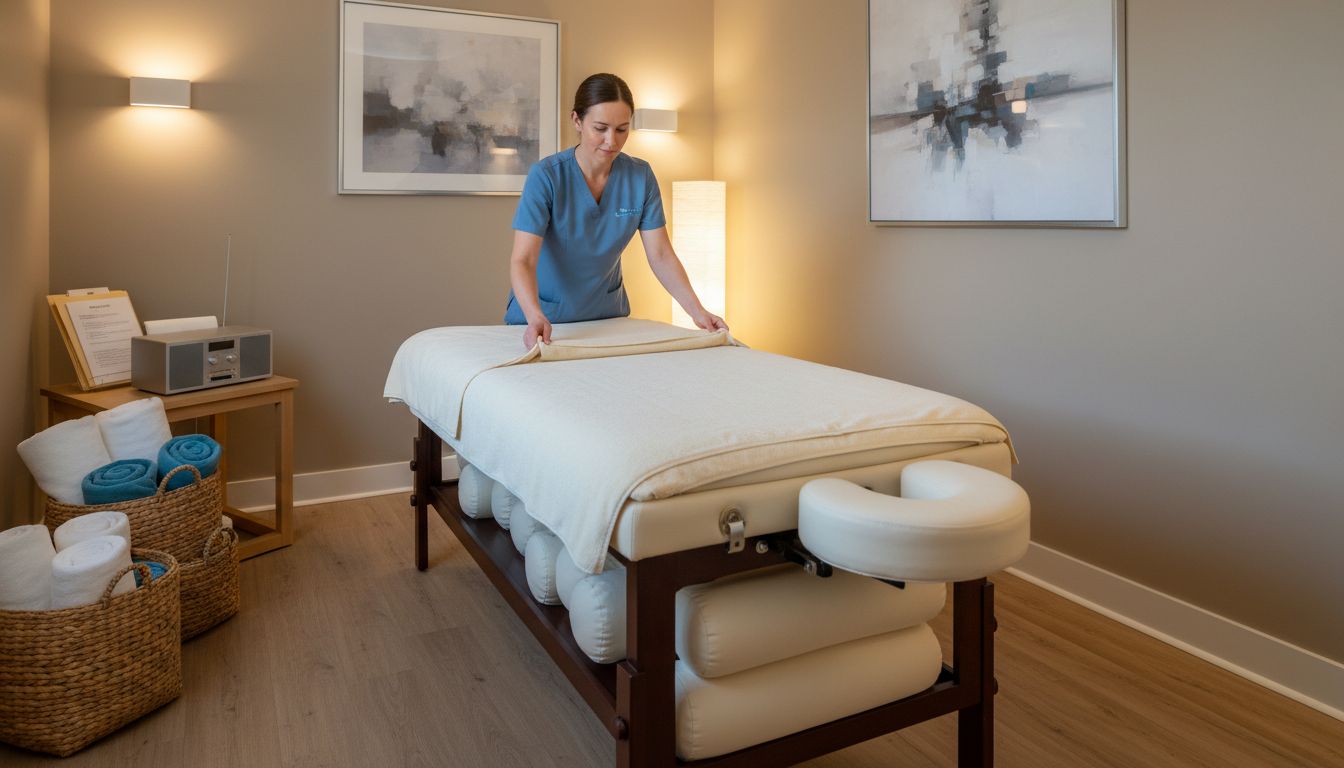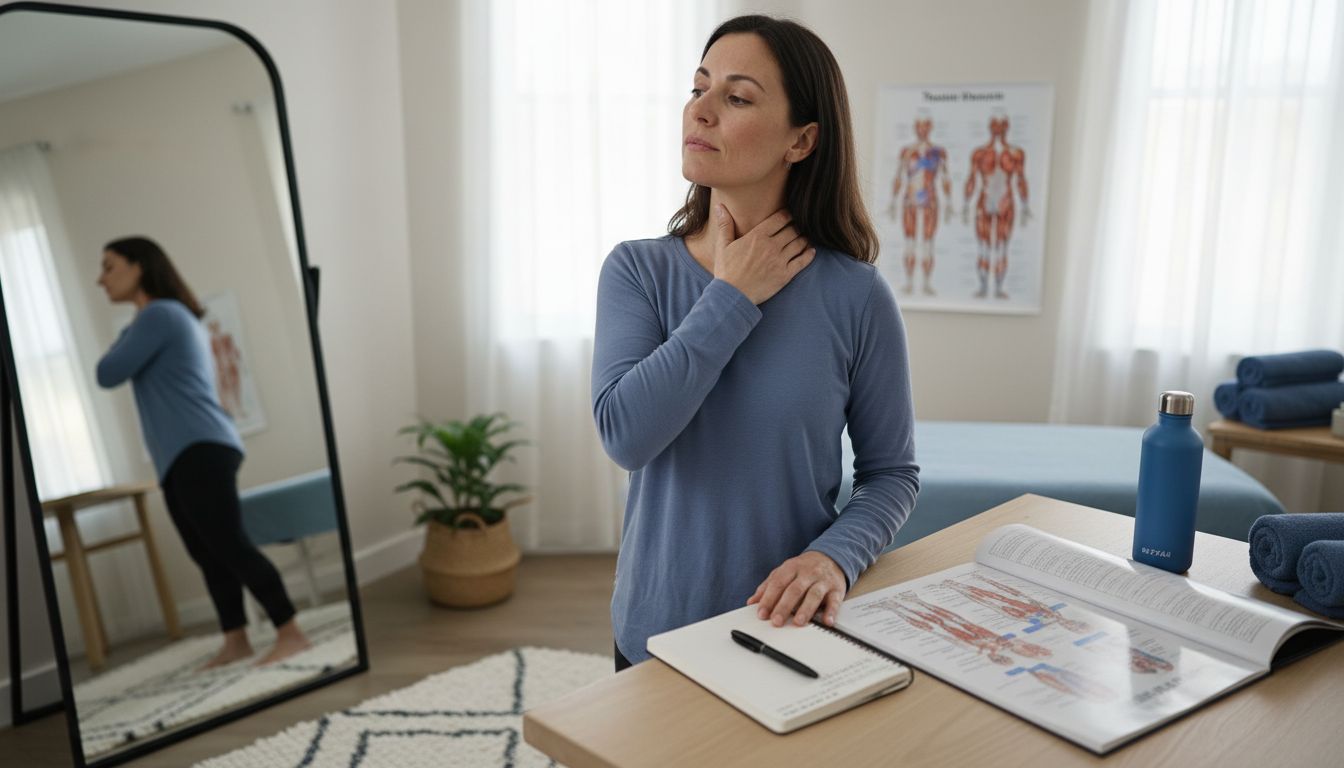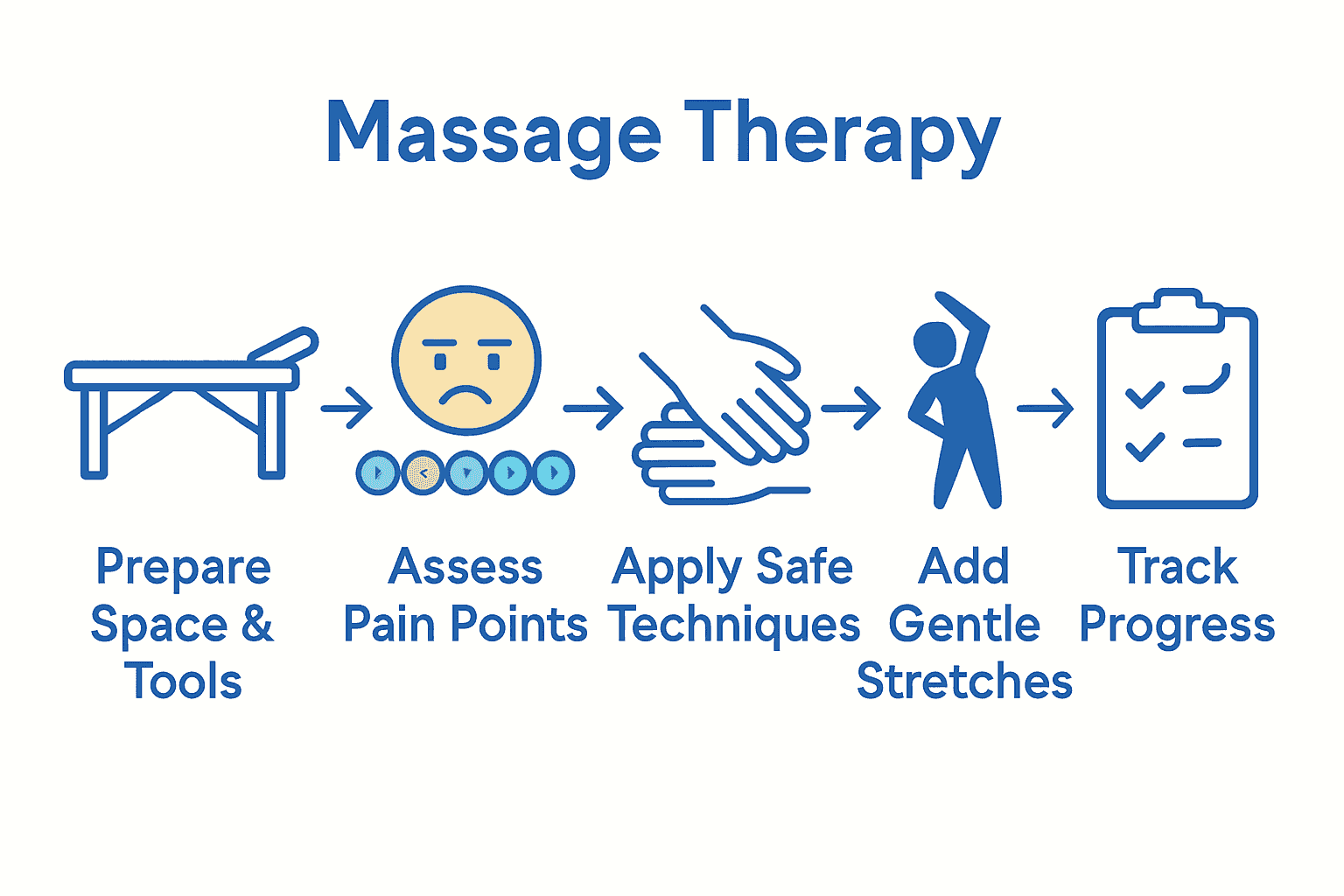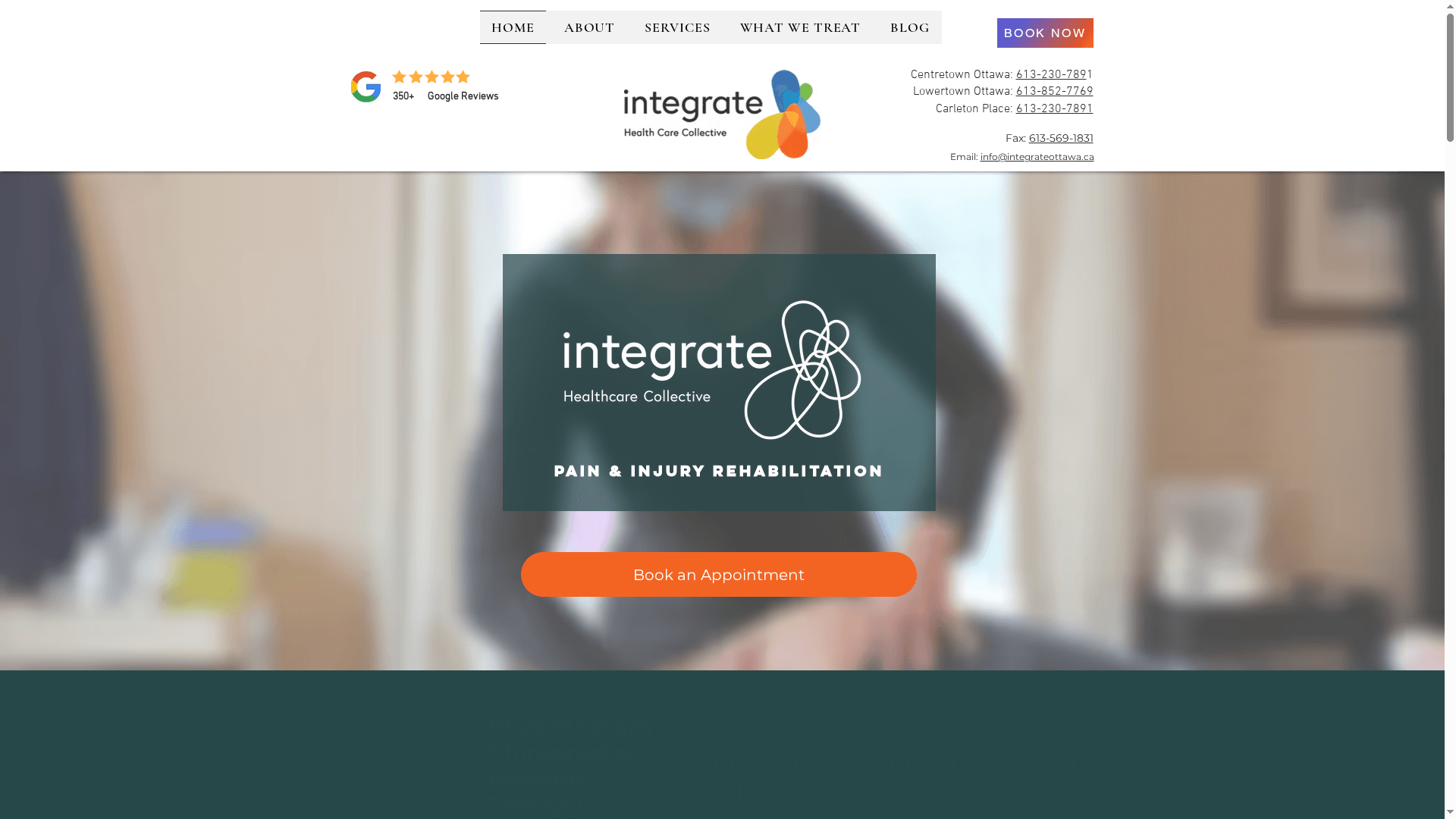Massage Therapy Routine Guide for Pain Relief Success
- 5 days ago
- 6 min read

Over 40 million adults in the United States turn to massage therapy each year for pain relief and relaxation. Creating a calming space and understanding your body’s unique pain points are the first steps toward lasting comfort. With the right preparation and easy-to-follow techniques, you can transform the way you address tension and improve your daily well-being. These simple strategies make effective at-home massage therapy more accessible than ever.
Table of Contents
Quick Summary
Key Point | Explanation |
1. Create a calming massage space | Use soft lighting, neutral colors, and minimal distractions to enhance relaxation and comfort during the massage session. |
2. Assess your pain points systematically | Perform a body scan to identify areas of discomfort, and document findings in a pain journal to tailor your massage routine. |
3. Apply safe and effective massage techniques | Start with gentle pressure using basic techniques, being mindful of your body’s signals to avoid injury. |
4. Incorporate gentle stretches and movements | Add movements like neck rolls and torso rotations to improve flexibility and support your massage therapy efforts. |
5. Track your progress regularly | Maintain a detailed journal of pain levels before and after sessions, and schedule professional assessments to adapt your care strategy. |
Step 1: Prepare Your Massage Space and Tools
Creating the perfect environment for your massage therapy session requires thoughtful preparation and strategic equipment selection. According to nuhs, selecting the right massage tools and establishing a comfortable space are foundational steps for effective pain relief.
Start by choosing a high-quality massage table with adjustable height and durable padding. Professional recommendations suggest selecting a table with high-density foam that provides consistent support and comfort for your clients. Invest in multiple supportive bolsters in different sizes to help clients maintain proper positioning and enhance relaxation during the treatment.
Your massage space should feel tranquil and professional. Consider soft lighting, neutral colours, and minimal distractions. mass recommends designing your room to ensure adequate space for movement and equipment. Include practical elements like clean linens, a designated area for client intake forms, and a music player to create a soothing atmosphere. A well-prepared massage environment sets the stage for a successful therapeutic experience.
Step 2: Assess Pain Points and Mobility Limits
Understanding your body’s pain points and mobility limitations is crucial for developing an effective massage therapy routine. aarp recommends a systematic approach to identifying areas of discomfort and restricted movement that require targeted therapeutic attention.
Begin by performing a comprehensive body scan. Start at your head and slowly move downward, gently pressing and assessing each muscle group for tenderness, tension, or restricted mobility. Pay special attention to areas that feel tight, sore, or produce discomfort when moved. According to painconnection, understanding your unique pain patterns is essential for creating a personalized massage strategy.
Document your findings in a simple pain journal. Note specific locations of discomfort, the intensity of pain on a scale from 1 to 10, and any movements that trigger or alleviate the sensation. 7 Key Benefits of Physiotherapy for Pain Relief and Recovery can provide additional insights into understanding your body’s pain signals. This assessment will serve as a roadmap for your targeted massage therapy routine, helping you focus on areas that need the most attention.

Step 3: Apply Safe Massage Techniques to Target Areas
therightmessages emphasizes understanding fundamental massage techniques as critical for effective pain relief. Learning how to apply these techniques safely will help you target specific muscle groups and alleviate tension without risking injury.
Start with basic massage techniques like effleurage smooth gliding strokes and petrissage kneading movements. According to consumerreports, the key is applying appropriate pressure while being mindful of your body’s signals. Begin with light pressure and gradually increase intensity only if comfortable. When massaging a specific area like shoulders or lower back, use your fingertips or palm to apply consistent circular or linear motions.
Pay close attention to your body’s response and stop immediately if you experience sharp pain. Complete Guide to Massage Therapy for Neck Pain can provide additional insights into targeted techniques for problematic areas. Remember that consistency and gentle approach are more important than intense pressure when performing self massage techniques.
Step 4: Integrate Stretches and Gentle Movements
painconnection emphasizes a holistic approach to pain management by combining massage techniques with strategic stretching. Integrating gentle movements helps improve flexibility, reduce muscle tension, and enhance overall mobility while supporting your massage therapy routine.
According to aarp, specific movements like neck rolls, shoulder shrugs, and slow torso rotations can significantly complement your massage techniques. Start with gentle movements that feel comfortable. For example, slowly roll your shoulders forward and backward, gently tilt your head side to side, and perform slow twists of your upper body while seated. Move within a pain free range and listen to your body.
Consistent and mindful movement is key to preventing muscle stiffness. EXERCISES can provide additional guidance on incorporating movement into your pain relief routine. Remember to breathe deeply and move slowly, allowing your muscles to gradually release tension and improve overall flexibility.
Step 5: Monitor Progress and Schedule Ongoing Care
healingworksfoundation emphasizes the critical importance of tracking your pain management progress systematically. Establishing a consistent monitoring approach helps you understand how your massage therapy routine impacts your overall pain levels and physical well being.
According to aarp, tracking your response to self massage techniques requires maintaining a detailed pain journal. Record your pain intensity before and after each session using a consistent 1 to 10 scale. Note which techniques provide the most relief and which areas require additional attention. Pay attention to changes in mobility range of motion and overall muscle tension.
Complete Guide to Why Choose Massage Therapy recommends scheduling professional assessments every 4 to 6 weeks to complement your self care routine. Consult with a healthcare professional if pain persists or worsens despite consistent massage therapy. Your ongoing care strategy should remain flexible and responsive to your bodys changing needs.
Take Control of Your Pain with Expert Massage Therapy
Managing persistent pain and limited mobility can feel overwhelming. This article highlights the importance of creating a tailored massage therapy routine that addresses your unique pain points and supports your body’s healing. Whether you struggle with muscle tension or want to improve overall flexibility through safe techniques and stretches, you deserve a care plan that adapts to your needs and helps you regain comfort.
Start your journey with professional guidance from Integrate Ottawa. Our team-based approach combines evidence-supported massage therapy with complementary treatments like physiotherapy and chiropractic care. You can depend on us to help you monitor progress and adjust your care as your body improves.


Ready to experience personalized pain relief strategies backed by healthcare experts Discuss your massage therapy goals today at Integrate Ottawa. Don’t wait until pain limits your daily life Find out how our compassionate team can support your healing journey and book your appointment now.
Frequently Asked Questions
How do I prepare my massage space for optimal pain relief?
To prepare your massage space, choose a high-quality massage table with adjustable height and ensure it has durable padding. Set the room with soft lighting, neutral colors, and minimal distractions to create a tranquil environment for your session.
What steps should I follow to assess my pain points before starting a massage?
Begin by performing a comprehensive body scan, starting at your head and moving downwards. Press gently on each muscle group to locate areas of discomfort, noting specific locations and pain intensity on a scale from 1 to 10 to guide your massage therapy routine.
What are some safe massage techniques I can use at home?
Start with basic techniques like effleurage, which involves smooth, gliding strokes, and petrissage, which consists of kneading movements. Apply light pressure initially, only increasing intensity if it feels comfortable, and ensure you pay attention to your body’s signals to avoid injury.
How can I integrate stretches into my massage therapy routine?
Incorporate gentle movements such as neck rolls and shoulder shrugs alongside your massage techniques. Focus on movements that feel comfortable and proceed slowly, allowing your muscles to release tension gradually and improving flexibility in your pain relief routine.
How do I track my progress in managing pain with massage therapy?
Maintain a detailed pain journal, recording your pain intensity before and after each massage session on a 1 to 10 scale. Document which techniques offer the most relief and monitor any changes in mobility and muscle tension to evaluate your progress effectively.
When should I consider scheduling professional assessments for my massage therapy routine?
Schedule professional assessments every 4 to 6 weeks to complement your self-care routine. If pain persists or worsens despite your efforts, consult a healthcare provider to adjust your massage therapy plan according to your body’s evolving needs.
Recommended

Comments